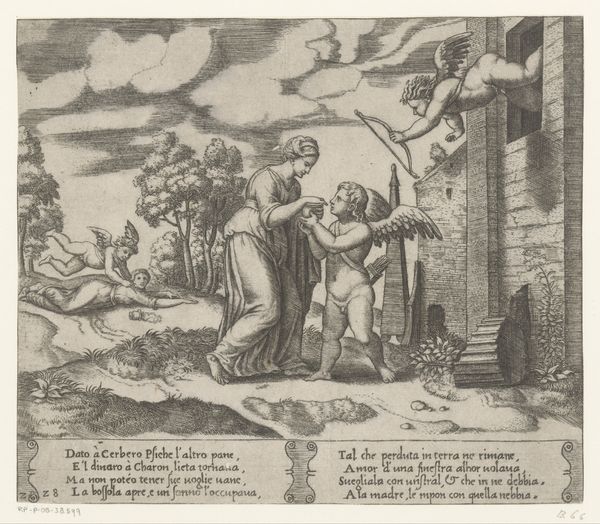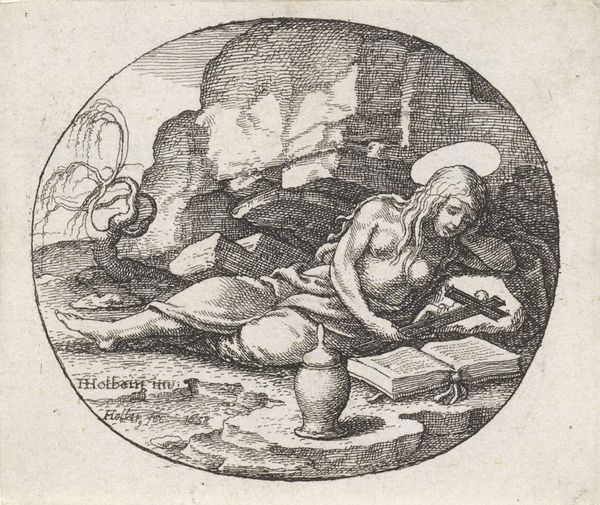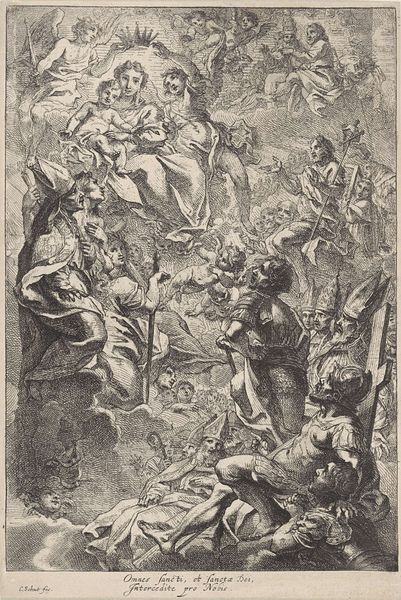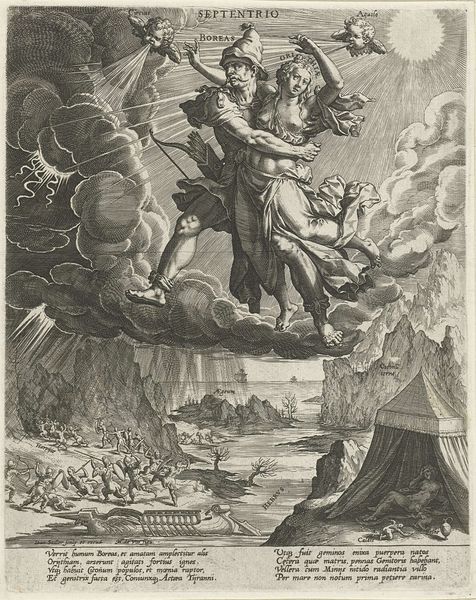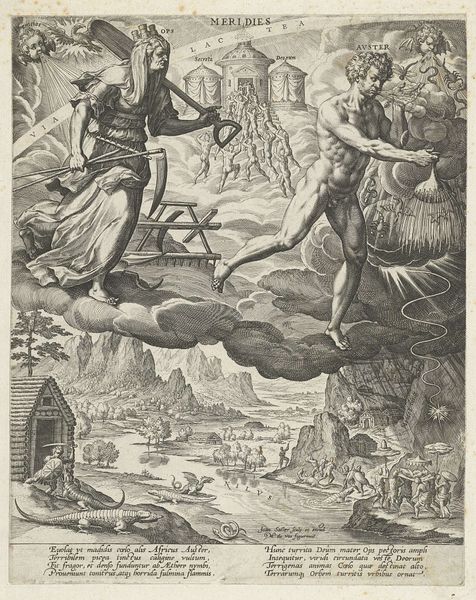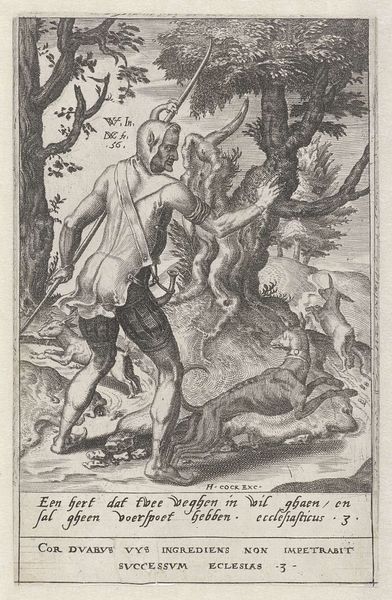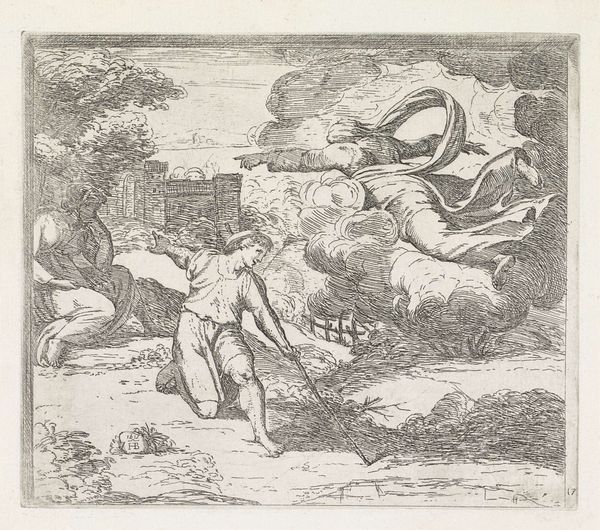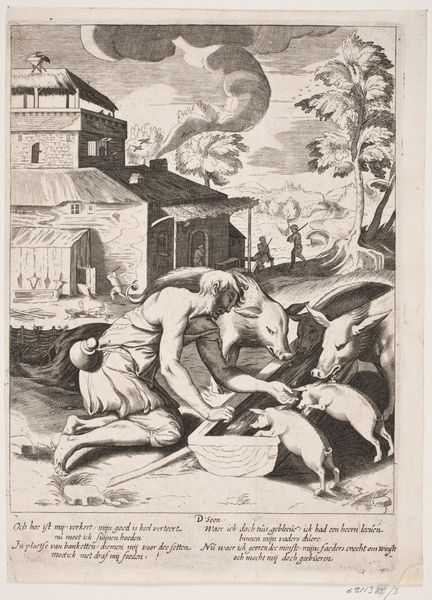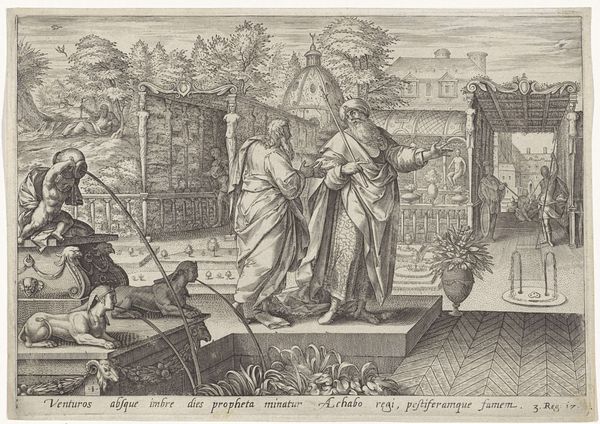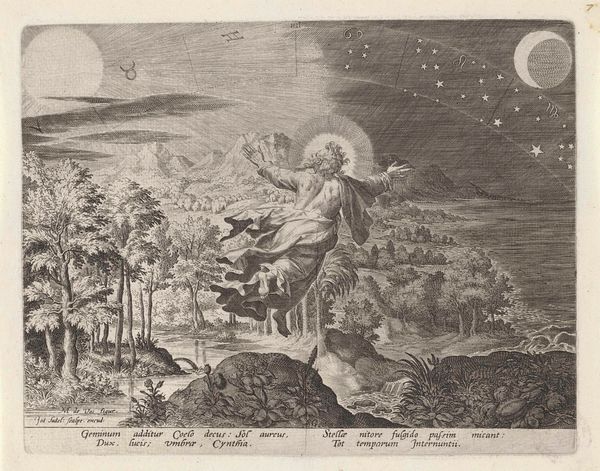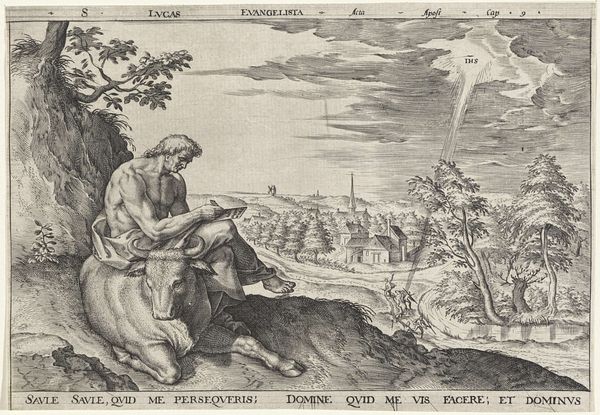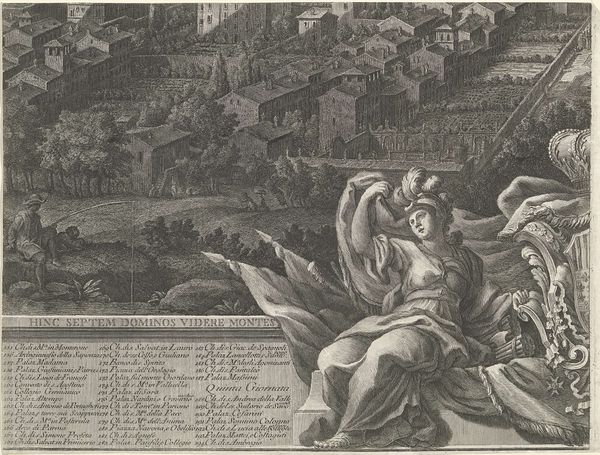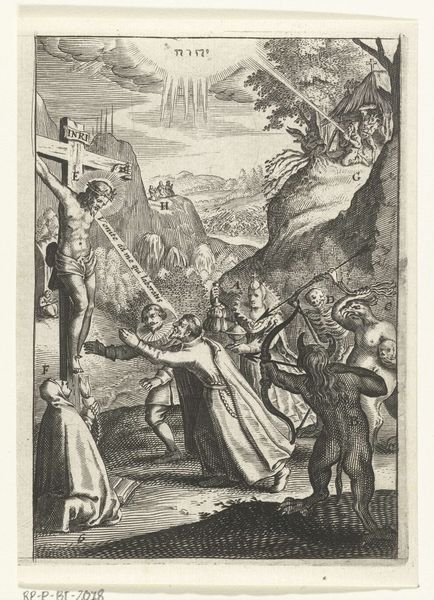
drawing, print, engraving
#
drawing
#
medieval
#
narrative-art
# print
#
pen sketch
#
landscape
#
figuration
#
11_renaissance
#
northern-renaissance
#
engraving
Dimensions: width 176 mm, height 118 mm
Copyright: Rijks Museum: Open Domain
Editor: Here we have Dirck Volckertsz Coornhert's "Jonah under the Gourd Vine," made around 1550. It’s a pen and engraving piece currently held at the Rijksmuseum. The rendering of the city in the background gives the whole piece a dreamlike and rather unsettling feel, while Jonah is drawn in this realistic and kind of stark manner, what do you see in it? Curator: The image strikes me through its meticulous line work; the varied textures create a captivating dialogue between the organic and the architectural forms. Consider the strategic deployment of chiaroscuro—how the dramatic contrasts amplify spatial depth. Have you noticed how the curvature of Jonah's body is juxtaposed with the geometry of the city? Editor: I hadn't thought about the geometry, that’s a good point, but is that contrast, you know, actually doing anything? I mean is there something deeper being communicated? Curator: The work invites us to consider binaries such as organic versus synthetic and nature versus artifice through the masterful application of line and form. Semiotically, what does it mean to represent divine discomfort against the backdrop of human construction? Editor: It’s really fascinating to think about those things, thank you. It gives a totally different meaning to the narrative. Curator: It demonstrates the complex relationship between artistic intention and cultural interpretation; in this context we must appreciate Coornhert's masterful compositional command and what is reveals regarding formalist inquiry.
Comments
No comments
Be the first to comment and join the conversation on the ultimate creative platform.
